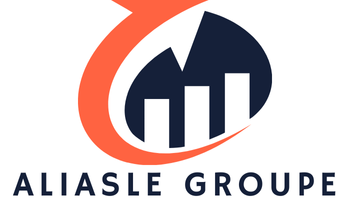Navigating International Software Development: A Guide to Legally Managing Your IP Rights
In the modern era of globalized software development, managing intellectual property (IP) rights has become a critical aspect of any business strategy. As companies increasingly turn to offshore software development to leverage cost savings and diverse talent pools, the complexities of protecting IP across different jurisdictions grow. Here’s a comprehensive guide to help you navigate these challenges and ensure your intellectual property remains safeguarded.
Understanding Intellectual Property Rights in Software Development
Intellectual property rights are the legal protections granted to creators and innovators for their original works, inventions, designs, and brand identifiers. In the context of software development, these rights include copyrights, patents, trademarks, and trade secrets.
Also read : Navigating Post-Brexit Trade: Legal Strategies for UK Businesses to Manage New Agreements
- Copyrights: Protect the source code, documentation, and other written materials associated with your software.
- Patents: Safeguard new inventions and processes, such as algorithms or unique software functionalities.
- Trademarks: Protect brand names, logos, and other identifiers that distinguish your software from competitors.
- Trade Secrets: Cover confidential business information, such as proprietary algorithms or software architectures.
These rights are essential for encouraging innovation, creativity, and economic growth by granting exclusivity for a limited time.
The Challenges of Offshore Software Development
Offshoring software development can offer significant cost savings and access to a global talent pool, but it also introduces several challenges related to IP protection.
Also read : Exploring the Legal Ramifications of Automated Decision-Making in UK Financial Services
Loss of Control and Communication Barriers
Offshoring often involves working with teams in different time zones, which can lead to delays in communication and a loss of direct control over the project. This can complicate the management of IP rights, especially if there are misunderstandings or miscommunications about ownership and use.
Intellectual Property Protection
One of the most significant risks of offshoring is the potential for inadequate IP protection. In some countries, IP laws may not be as robust as those in your home jurisdiction, making it difficult to enforce your rights. For instance, in India, enforcement of IP laws can be lax and navigating the local legal system can be challenging.
Strategies for Protecting Your IP Rights
To mitigate these risks, several strategies can be employed to protect your IP rights when engaging in offshore software development.
Careful Vendor Selection and Due Diligence
Choosing the right vendor is crucial. Perform thorough due diligence on potential partners to ensure they have a proven track record of respecting IP rights. Look for vendors operating in countries with stronger legal protections for intellectual property and ask for references from previous clients.
Detailed Contracts with Clear IP Clauses
A well-written contract is essential. Ensure the contract explicitly states that all intellectual property developed during the project belongs to your company. This includes not only the final product but also any code, designs, and ideas generated throughout the development process.
Key Contract Clauses:
- **Ownership**: Clearly define who owns the IP generated during the engagement.
- **Assignment of Rights**: Require the offshore team to assign all rights to the work they produce to your company.
- **Non-Disclosure Agreements (NDAs)**: Include NDAs to protect sensitive information.
- **Jurisdiction**: Specify that the contract is enforceable in both your country and the vendor’s jurisdiction.
Non-Disclosure Agreements (NDAs) and Confidentiality
Before sharing any sensitive information with your offshore development team, have them sign a non-disclosure agreement. This NDA should prohibit the vendor from sharing or using your proprietary information outside the scope of the project. Ensure the NDA is enforceable in both jurisdictions.
Limiting Access to Sensitive Information
Control access to sensitive materials by limiting the offshore team’s access to only the parts necessary for their work. For example, sensitive algorithms or core functionality could be developed in-house while outsourcing less critical elements to the offshore team.
Secure Development Environments
Use secure development environments to protect your intellectual property. Implement secure servers, require the use of virtual private networks (VPNs), and adopt tools that track who accesses certain parts of the code or information. This ensures greater accountability within the offshore team.
Managing IP Rights in Open Source and Collaborative Development
The rise of open innovation and collaborative development models adds another layer of complexity to IP management.
Balancing Collaboration and Protection
In open innovation models, multiple stakeholders, including internal and external entities, contribute to the development of products and services. Determining ownership and managing IP rights in such a distributed innovation ecosystem can be complex. It requires a delicate balance between collaboration and competitive advantage.
Using AI to Enhance IP Protection
Advanced digital technologies, including AI, can assist in detecting IP infringements more quickly, uncovering market trends and gaps, and optimizing IP portfolios. For example, Amazon uses AI to combat the sale of imitation goods on its platforms by scanning billions of product listings to detect counterfeit items. Similarly, companies like Patsnap use AI to analyze vast amounts of IP data to uncover emerging market opportunities and potential risk areas in patent development.
Navigating Global IP Laws and Regulations
Global diffusion of technology and the democratization of innovation have made it easier for anyone to develop and alter IP, but this also complicates enforcement. Here are some key considerations:
Jurisdictional Differences
IP laws vary significantly across different jurisdictions. For instance, the European Patent Office (EPO) requires a demonstration of a “technical effect” beyond the mere running of software on a computer, which is different from the standards in the U.S..
Cross-Border Compliance
Ensure that your IP strategies are adaptable and globally harmonized. This involves creating a cohesive system to monitor the vast digital landscape and enforce your IP rights across different countries. Collaborating with global patent experts can help you secure protection in key markets while avoiding common pitfalls such as patent rejections or invalidations.
Practical Advice for CEOs and Business Leaders
For CEOs and business leaders, navigating the complex landscape of IP protection in software development is crucial for maintaining a competitive edge.
Embed IP Considerations Early
Embed IP considerations directly into your research and development process. This includes crafting a narrative around your software’s innovation, which can then be embedded into your patent filings. This approach not only provides legal protection but also differentiates your product and positions your company as a leader in its field.
Use AI to Streamline the Patenting Process
Leverage AI tools to assist in prior art searches, draft patent applications, and predict the likelihood of patent approval. This can streamline the patenting process, reduce costs, and improve the quality of patent filings.
Ensure Clear Ownership and Licensing
Clearly define ownership of IP in all contractual agreements. Decide whether IP rights will be shared or fully transferred to your company. Ensure that any open-source software used complies with licensing requirements to avoid infringement issues.
Managing IP rights in international software development is a multifaceted challenge that requires careful planning, detailed contracts, and ongoing compliance. By understanding the nuances of IP laws, leveraging advanced technologies like AI, and implementing robust protection strategies, you can safeguard your intellectual property and ensure your business remains competitive in the global market.
### Key Takeaways
- **Careful Vendor Selection**: Choose vendors with a proven track record of respecting IP rights.
- **Detailed Contracts**: Ensure contracts clearly define IP ownership and are enforceable in both jurisdictions.
- **Non-Disclosure Agreements**: Use NDAs to protect sensitive information.
- **Secure Development Environments**: Implement secure servers and VPNs to control access to sensitive materials.
- **Global Compliance**: Ensure your IP strategies are adaptable and globally harmonized.
- **AI Integration**: Leverage AI to enhance IP protection and streamline the patenting process.
By following these strategies, you can protect your intellectual property, maintain your competitive edge, and drive innovation in the ever-evolving landscape of software development.





